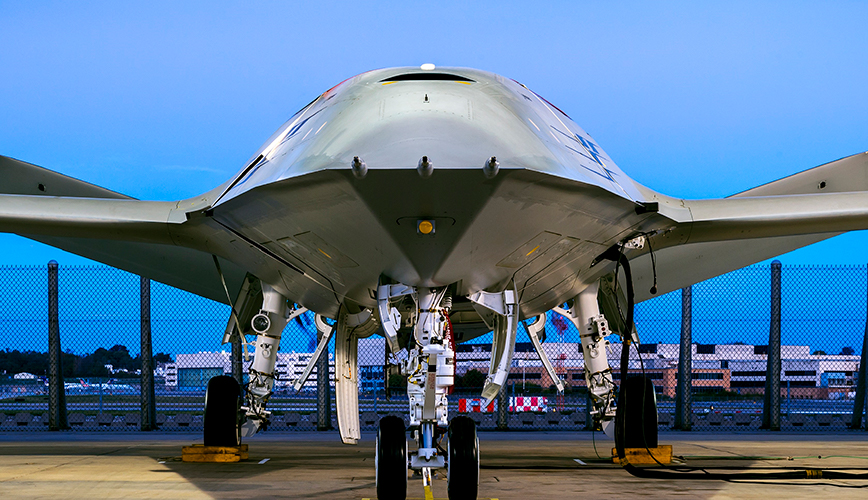This post is also available in:
 עברית (Hebrew)
עברית (Hebrew)
Boeing unveiled its entrant for US Navy’s MQ-25 tanker drone program, also known as the Carrier Based Aerial Refueling System (CBARS), designed to provide the navy with refueling capabilities. The wing-body-tail aircraft prototype will be ready to begin tests this month.
The tanker would extend the combat range of deployed Boeing F/A-18 Super Hornet, Boeing EA-18G Growler, and Lockheed Martin F-35C fighters.
Boeing has moved away from the flying wing design it considered putting forward to the precursor of the MQ-25 program when the Navy prioritized strike and ISR capabilities for its first carrier-based drone. Boeing said the wing-body-tail design was the best for the refueling mission, adding that the company incorporated lessons from its Phantom Ray unmanned demonstrator and other Boeing unmanned aerial systems.
According to defensenews.com, Boeing’s MQ-25 is slated to conduct engine runs before moving on to deck handling demos early next year.
According to popularmecahincs.com, the image released by Boeing reveals robust landing gear for carrier operations and possibly a low-observable design, although stealth is not one of the primary requirements for the drone tanker. The Navy, however, has been researching a multitude of carrier-launched aerial drone systems for years, from surveillance to electronic warfare to strike operations. If Boeing secures the contract for the MQ-25 tanker, they could have a leg up for future Navy contracts for additional carrier-launched drone aircraft. It is not clear whether the MQ-25 prototype from Boeing Phantom Works was designed with future drone configurations in mind.
Boeing is the first of the MQ-25 competitors to formally show off a prototype aircraft. General Atomics has published concept art of its MQ-25 — seemingly based on its Avenger UAS, which bears a strong resemblance to the MQ-9 Reaper — and has mounted an intensive advertising campaign featuring a rendering of the aircraft.
Lockheed Martin and Boeing have also released concept art of their offerings, but both opted not to show the full aircraft. Instead, the images show the refueling pods of each UAS connected by probe and drogue to a fighter jet.


























